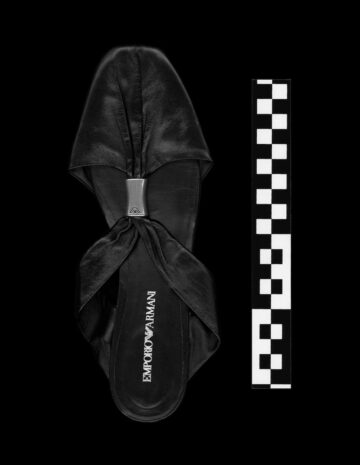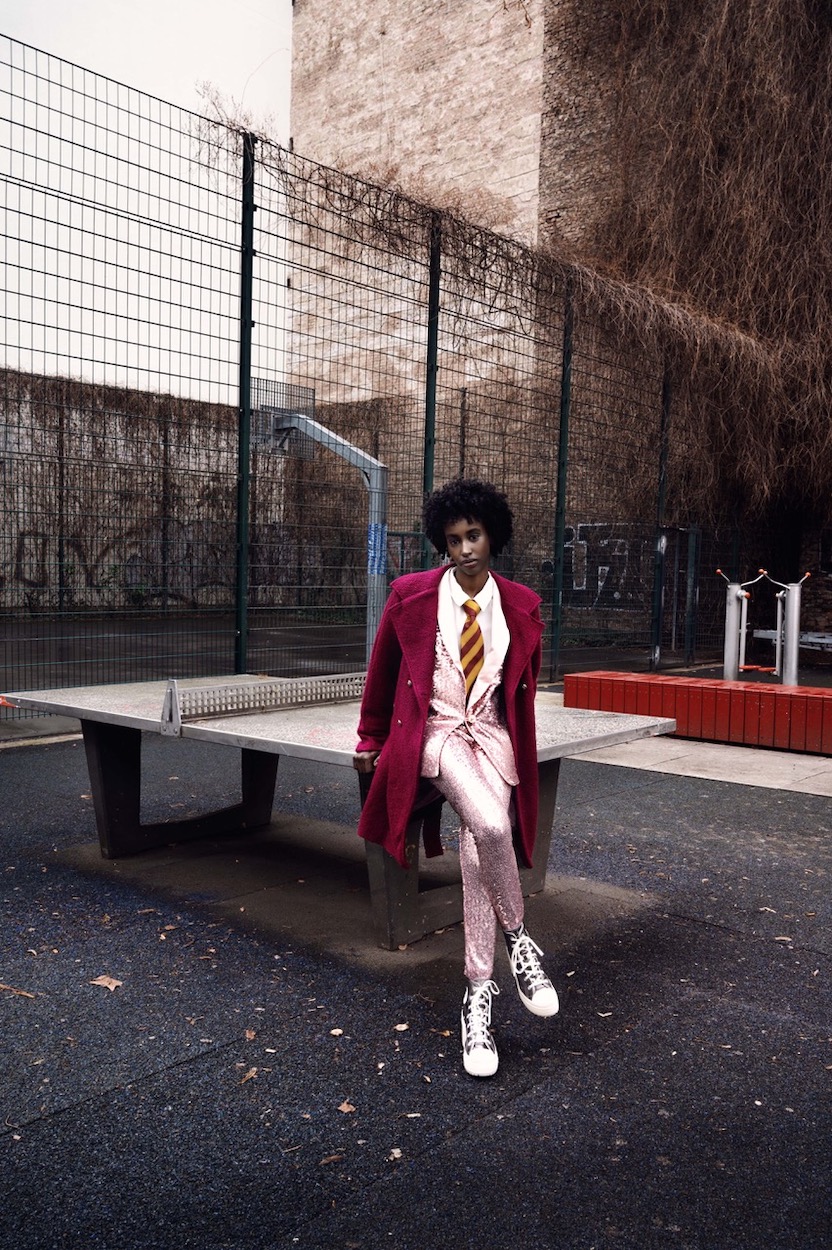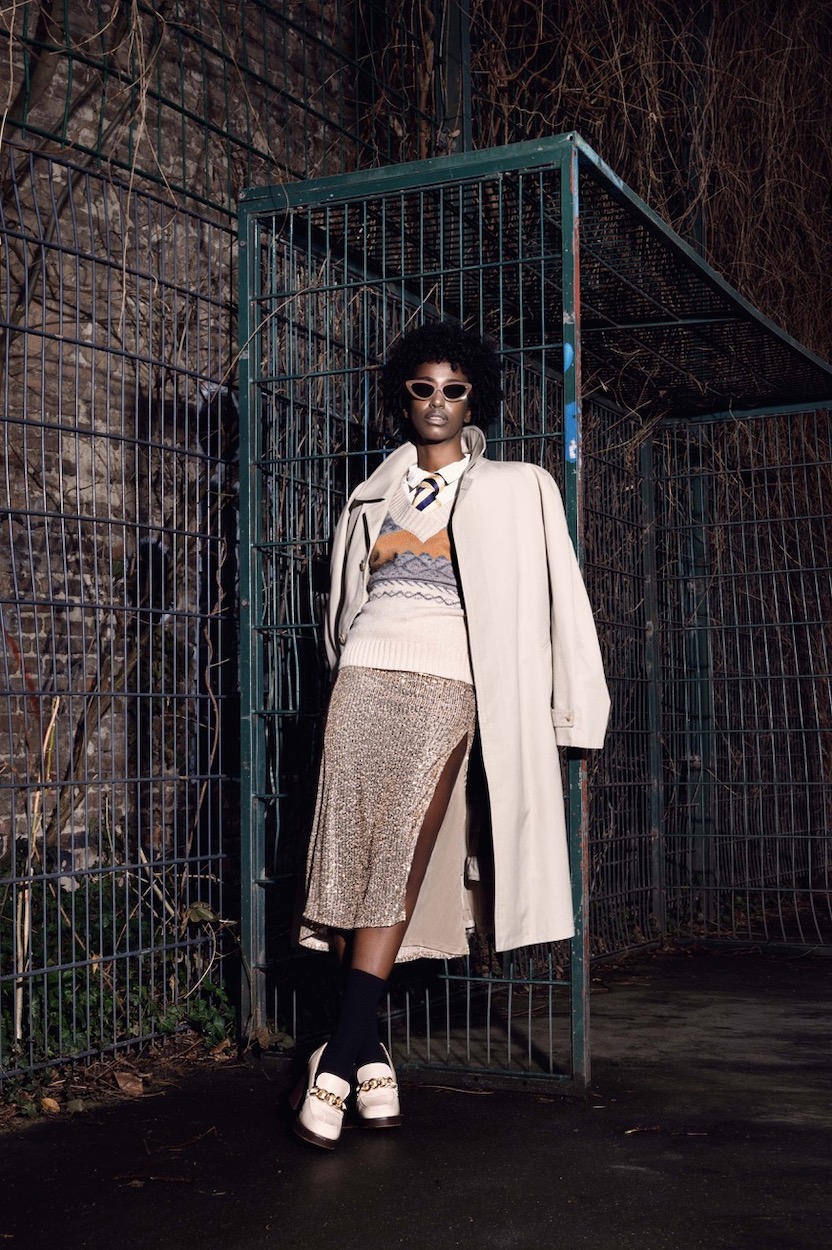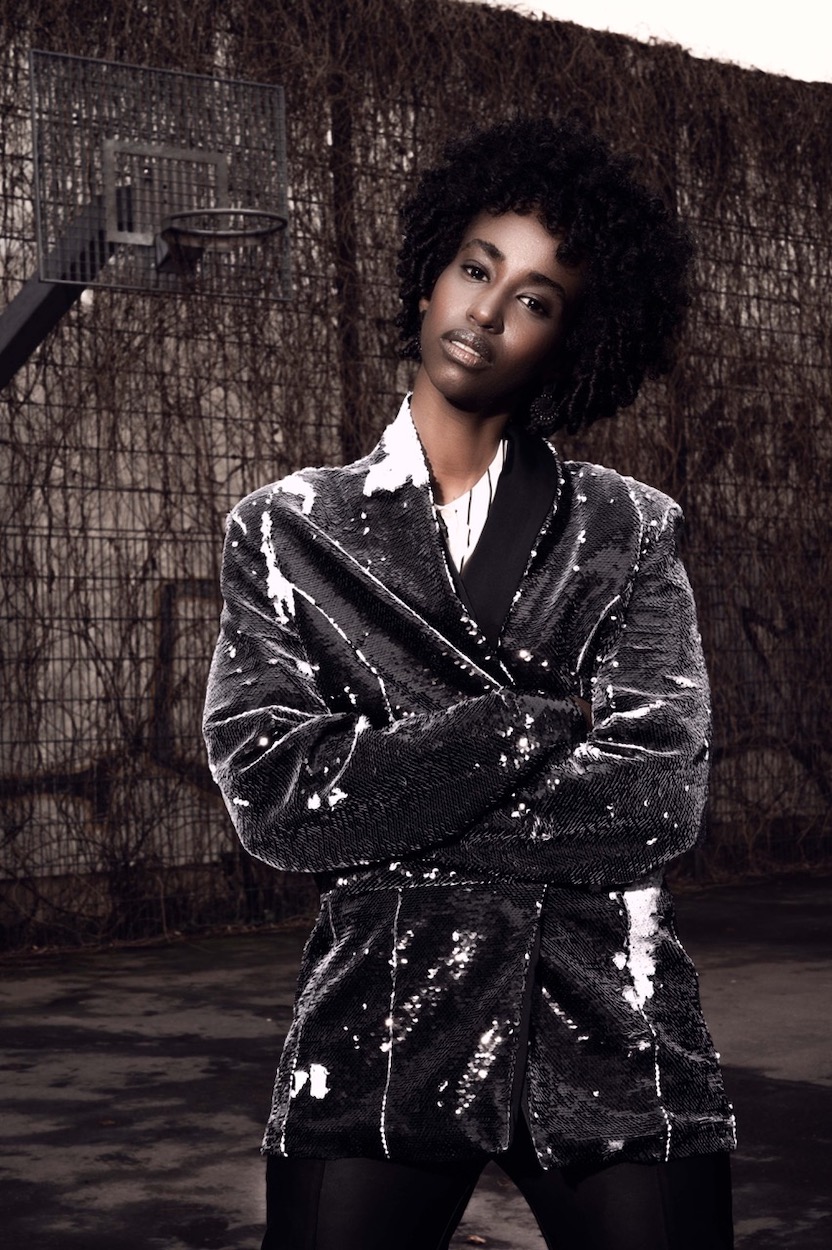
FIGHT ISSUE VOL A: EVA STENRAM
Photography: EVA STENRAM





Aline Celi‘s path to design wasn’t a sudden revelation. It was a lifelong fascination with its beauty but also a vision that goes beyond, an urge to really make a difference in this world. The Brazilian, now Berlin-based designer creates a dialogue between her native culture and Germany, mixing the vibrancy, warmth, passion and connection with nature coming from Brazil, with the precision, minimalism and mission for sustainability, influenced from her life in Germany. Between Brazil’s rich artistic traditions influenced from indigenous, African and Portugese/European threads, and the contrats coming with realities of ineuqality, systematic barries affecting race, class, and LGBTQ+ rights, Celi aims to create from a sense of civic responsibility. We spoke to the ready-to-wear designer about the complex tapestry of traditional Brazilian fashion and its contemporary changes as well as why purposeful fashion can organically give space for co-existing beauty, sustainability, and ethics.
„I believe that true fashion isn’t just about trends; it’s about creating pieces that carry meaning and stand the test of time, pieces that represent you and that you will want to wear everyday.“
Aline Celi: I would say I’m passionate, determined and conscious.
Yes, absolutely. CELI is an extension of who I am and what I believe in. It’s about creating fashion with purpose – where beauty, sustainability, and ethics coexist. I would also describe it as timeless, refined, and responsible.
Fashion, for me, is storytelling and a way people can express themselves through clothes and style . It’s about expressing who we are, what we stand for, and the energy we bring into the world. It’s also about emotions – how a piece makes you feel when you wear it, clothes can make you feel more powerful. I believe that true fashion isn’t just about trends; it’s about creating pieces that carry meaning and stand the test of time, pieces that represent you and that you will want to wear everyday.
I don’t have just one, but I admire designers who stay true to their values and create with intention. I really like Chanel and Dior, for example. I also think Stella McCartney’s commitment to sustainability is inspiring, and I love Phoebe Philo’s minimalist yet powerful aesthetic. But beyond fashion, I find inspiration in strong, independent women who use their voice to make a difference.
My path to design wasn’t a sudden revelation. It was a lifelong fascination that began in childhood. I grew up surrounded by beauty, with a particular love for elegant fabrics and the sparkle of gemstones. Even as a young child, I was always sketching dress designs, and I remember eagerly taking my drawings to the local seamstress, fascinated by how she could turn my visions into reality. That early love for fashion, coupled with a deep appreciation for the artistry of creation, solidified my desire to become a designer.
Oh, absolutely! It was a sketch of a dress that I made, it was my favourite of them all and I wanted to bring my imagination to live so I took it to a seamstress and ask her if she could do it and she ended up saying yes. When she gave me the dress I was so happy that my idea was now a physical piece. That’s when I realized how much joy a simple piece of clothing could bring, and I think that’s where my love for design really started.
I learned through a combination of formal education, self-exploration, and real-world experience. My approach to a new collection is very organic—I start with a feeling or a concept that speaks to me. I gather inspirations from nature, art, and everyday life. Then, I experiment with materials and silhouettes until the collection starts to take shape. It’s a deeply intuitive process for me.
I love all the parts of designing, the search for inspiration, the making of a moodboard, the first sketches, until the last design is chosen and I also love the moment when an idea turns into something tangible – when I see the first sample and realize that my idea has come to life. Fabrics play a huge role in this, and I am especially drawn to organic linen, silk, organic cotton and recycled materials such as recycled polyester, that is one of the fabrics that we mostly use. They not only feel luxurious but also align with my values of sustainability and trying to make fashion more circular and sustainable.
Sustainability is not just a concept for me – it’s a responsibility. The fashion industry has caused so much harm to the environment, and I want to be part of the solution. This vision started from my love for nature and my belief that luxury and sustainability can go hand in hand. We work with recycled PET bottles transformed into fabric, organic linen, and ethically sourced materials. We also made pieces with 3D printed fabric as well as pineapple leather. Moving forward, I want to explore more plant-based and new technology fabrics to push the boundaries of sustainable fashion even further.
The industry moves too fast. Fast fashion has created a culture of overconsumption, waste, and exploitation. The biggest problem is the disconnect between consumers and the impact of their choices. But I also see a huge shift happening – people are becoming more aware and demanding transparency. The biggest potential lies in brands that prioritise ethics, craftsmanship, and sustainability over mass production.
My Brazilian upbringing was a complex interplay of cultural vibrancy, social awareness, and natural splendor. The nation’s rich artistic traditions fostered a deep appreciation for expression, while the stark realities of inequality instilled a sense of civic responsibility. Coupled with the awe-inspiring natural landscapes, these experiences forged a nuanced understanding of the world, shaping my values and approach to life.
Brazil is a country of immense scale and breathtaking diversity. Imagine a place where the Amazon rainforest, a realm of unparalleled biodiversity, meets sun-kissed beaches and vibrant, bustling cities. The nation’s culture is a rich tapestry, woven from indigenous, African, and European threads, expressed in its captivating music, dance, and art. Brazilians possess a palpable zest for life, a love for football, and a warm, welcoming spirit. However, Brazil is also a land of contrasts, where wealth and poverty coexist, and where modern skyscrapers cast shadows over historical neighborhoods. The nation grapples with social and economic complexities, yet it radiates an undeniable energy and passion that captivates all who visit.
Brazilian contemporary fashion is a vibrant mix of bold colors, sensual silhouettes, and a laid-back, yet luxurious, aesthetic. It’s special because it effortlessly blends tropical influences with urban edge, reflecting Brazil’s diverse culture. Over the years, it’s evolved from a focus on beachwear to a more sophisticated, globally-influenced style, while still retaining its unique, energetic spirit.
The vibrant imagery of passion, joy, sensuality, and the spectacle of Carnival undeniably permeates Brazilian fashion, contributing to its distinctive, exuberant character. These elements manifest in the bold colors, figure-enhancing silhouettes, and a general celebratory spirit that defines much of contemporary Brazilian design. However, it’s crucial to understand that this is not the sole influence. Traditional Brazilian fashion is a rich and complex tapestry, deeply rooted in the nation’s diverse cultural heritage. It’s a fascinating blend of indigenous, African, and Portuguese influences, each contributing unique elements. Indigenous traditions are evident in the use of natural materials, intricate weaving techniques, and elaborate featherwork. African influences brought vibrant textiles, such as wax prints, along with intricate beadwork and rhythmic patterns that are often seen in traditional garments. The Portuguese colonization introduced European tailoring styles and fabrics, which were then adapted to the Brazilian climate and aesthetic.
Well on one hand, inclusivity is celebrated but on the other hand, deep inequalities persist, affecting race, class, and LGBTQ+ rights. Legal protections exist, but systemic barriers and economic disparities remain challenges. Progress is being made, but true equality requires ongoing efforts.
Yes, CELI is a dialogue between both cultures. From Brazil, I bring warmth, organic textures, and a connection to nature. From Germany, I take precision, minimalism, and sustainability. The two influences balance each other beautifully, creating something unique.
I’m very interested in expanding in Italy in cities like Milan and in France in Paris because they appreciate high-quality, sustainable fashion and I think the brand represents that market very well and would be welcomed there. But no matter where CELI goes, my goal is always the same – to create sustainable fashion that makes a difference.

Photography: EVA STENRAM

"CREATIVITY OFTEN…

Last month, for the launch of their new scent "Vanille Caviar", Paris-based perfume house…